March 2018
A bit about me
Noticing and learning about the natural world around me has been essential to me since I was very young and wherever I am I am curious about what shares my space, or rather whose space I am sharing. A life-long amateur naturalist, a compulsive writer and photographer who loves to acquire knowledge and share information. I have an insatiable curiosity. Practically everything in the natural world fascinates me and I believe is worth notice. To me there is no such thing as an ‘ordinary’ garden bird or a weed and I wouldn’t dream of purposely squashing an insect or a spider, often much to most people’s horror, I have to say.
About the blog
I was privileged to live in Andalucia in the far South of Spain for almost 11 years, from the summer of 2002 to the end of 2011. The first two years were spent living on a hillside near Estepona in Malaga Province with a glorious cultivated garden, and even better for me a ‘wild garden’, an area left in its original state with indigenous vegetation that was visited by all manner of birds and insects. Following that we moved further along the coast to Sotogrande where there are a diversity of habitats to wander in Cadíz province.
From the day I knew we would be moving there from South Wales, I began to research as much as I could about the wildlife I hoped to encounter, but there’s just such an abundance of flora and fauna and such a diverse variety of habitats to support it, I realised quickly I would have to wait and learn ‘in situ’.
At first I struggled to identify much of what I encountered there. There are some excellent identification books out there, but they tend to cover more of the Mediterranean area than the area I was interested in. I took photographs of anything and everything that attracted my attention, but of course back in the early days images were recorded on film that had then to be developed and printed: expensive and with no guarantee that I’d got a good enough image to pick out its finer details! At times I got frustrated, frequently confusing species of both flora and fauna: I’d think I’d got them, then find out they only occur in Corsica or Turkey! But over time and through hours spent blissfully wandering around my local areas I began to recognise the more common and regularly-occurring wildlife. I kept some fairly detailed journals too and as my confidence grew and with the advent of the wonderful digital image, I started this blog. Here I had a place to record my ‘finds’ which I could both use as a reference for myself and share with others on similar journeys of discovery.
The blog name
 We moved to our home in Sotogrande in the winter of 2004 and the following Spring I began to hear a bird singing from the Cork Oak trees just a few metres away from our terrace. I was entranced, but having never heard it before and as it stayed well hidden from view, I had no idea what it was. Soon afterwards, while out walking with some friends we heard a similar song and being expert ‘birders’ they immediately called ‘Nightingale’. I was delighted, as I had never heard one before and suddenly felt very privileged to have my own personal serenader so close to home. Once recognising the song I began to hear it frequently and in many of the places we walk, so Nightingale Trails seemed appropriate although I am claiming a little ‘poetic licence’, as the birds are actually only here to breed from the end of March/April till June.
We moved to our home in Sotogrande in the winter of 2004 and the following Spring I began to hear a bird singing from the Cork Oak trees just a few metres away from our terrace. I was entranced, but having never heard it before and as it stayed well hidden from view, I had no idea what it was. Soon afterwards, while out walking with some friends we heard a similar song and being expert ‘birders’ they immediately called ‘Nightingale’. I was delighted, as I had never heard one before and suddenly felt very privileged to have my own personal serenader so close to home. Once recognising the song I began to hear it frequently and in many of the places we walk, so Nightingale Trails seemed appropriate although I am claiming a little ‘poetic licence’, as the birds are actually only here to breed from the end of March/April till June.
Ongoing aims for the blog
Sad to leave Spain, I decided to carry on with the blog to maintain a link with this amazing country that still holds a piece of my heart. Besides which, I have hundreds of photographs and several years worth of journals to refer back to and what better way to keep the connection alive than to share them here?
I would also like to present a different view of this particular part of Spain – it is truly beautiful and relatively unspoiled. Cadíz province alone is a vast and diverse area and information on where to go to see what you’re interested in is limited, particularly if your Spanish is equally limited! For that reason I’d like to present anyone who visits, or intends to visit with some ideas about where to go to explore the wilder parts of the Cadíz area, and the best time to visit and what they might see, based on visits I’ve made myself.


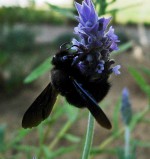
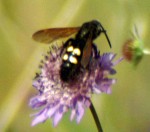
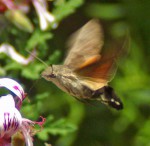

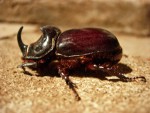
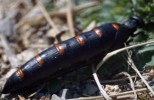
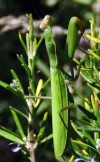

I was glad to discover your blog, having visited some of the places in Spain you have described, and look forward to learning more about the natural history in your region of the world.
LikeLike
Interesting stuff – well done! We live in Huelva province near Coto Donana national park but are hoping to move soon to Cadiz province, so your blog is especially interesting and relevant. Have a look at our website http://www.wildscope.com for some views from the other side of the Guadalquivir.
LikeLike
I have a bit of land in the campo in the hills near Comares in Malaga province. A bit more than half of this is wild holm oak, with a dense understory of thorny scrub. In the 13 years I have been here, I have been into this part of the land exactly once. If you could walk upright and unhindered, it would take about 5 minutes to walk across it. I crawled, and it took almost 2 hours to get through it. My clothes were ripped, and lots of blood. So now, it is for the birds, animals and insects and I leave them totally alone and undisturbed. The rest of the land is a mix of a small, open valley which is on the edge of the oak trees, and so is a lovely place to swing in a hammock and listen to the birds & watch them as they occasionally come close, and then below the valley & the oaks, olive & almond trees, and a veggie terrace with some fruit trees as well. I cleared a stand of fig which had gotten out of control and cut the wood into lengths and then stacked it on the edge of the veggie terrace. This is now an animal “hotel”, with lizards and small animals living in it. Unfortunately, my cat has discovered it too, and it is also her private larder! Interestingly, although I was concerned, I see no signs of these animals causing problems with my veg! There is a spring on the edge of my land, though this is captured and piped to a fuente a little further down the hill on a path which borders the land. But there is also a lot of water in the ground, and even at the end of summer, the place is far greener than most of the surrounding land – I even have cania growing on the side of the mountain, something that normally only grows in riverbeds! Love your blog, and was very happy to find it. I had been trying to identify the mammoth wasps on my land and yours was the first site to name them that I found, after a long time hunting on google, so very appreciative.
LikeLike
Sounds like my kind of paradise Gavin! Sadly I am no longer living in Spain and miss it very much. I haven’t done much with the blog since leaving to return to Wales but I accumulated so much information and several hundred photographs over the ten years I was there that I am planning to add to it and will definitely leave it there for reference. I write a similar blog now about my locality in North Wales, so if you ever need to see a bit of greenery, or birds on the other end of their migration, please drop in! http://theresagreen.me
LikeLike
How lovely to have ‘your’ nightingales! We have a mistle thrush in our fields here in Suffolk – I’m hoping one day we might get a song thrush or even a nightingale.
LikeLiked by 1 person
Thank you for taking an interest and for your comments. It certainly was a privilege to have nightingales as close neighbours and I hope you get your wish for some of your own. There are Song thrush here in North Wales where I live currently, but not as many as there could be. Best wishes, Theresa
LikeLike
Song birds obviously like you! Do you also blog about the wildlife in Wales somewhere?? Hope the weather wasn’t too wild where you are…
LikeLike
Sorry – I’ve just seen that you do indeed blog about wildlife in the UK! Best wishes.
LikeLike
As you’ve already discovered, yes I do also blog about wildlife in North Wales! I know it’s confusing, but lived in Spain for ten years and miss it, so keeping this one going retrospectively. The weather here has been very wild, calmer today but revving up for more I think….
LikeLike
Hi, my first visit to your site. I found it very interesting. I live in Almeria province so fairly dry here and have recently started to take photography from point and shoot to a slightly higher level. Still only practicing really, and also have joined blipfoto where you are encouraged to post a picture every day. So I am now taking more notice of my surroundings and today I saw some burgundy coloured beetles (I think – am new to nature as well!). There were quite a few on an Oleander bush and I was trying to identify them when I discovered your site. I look forward to enjoying your blog.
LikeLike
Thank you Alison, I haven’t visited Almeria but would love to. Photography is great for getting you looking at things more closely and spotting the abundant nature can become highly addictive once you get your eye in! Best wishes
LikeLike
Wonderful information, so glad we found you.
We have a lizard amoungst other creatures living in our shed, about 20cm long, when I first saw it the coulouring appeared to be white background with black to brown spots, it has since shed its skin, hence loving in the shed probably, and is now a lot darker with a slight green tint to its back, it is not scared of us we can approach to within touching distance but don’t.
Its dropping are over 1″ long full of fly wings.
I do have photos but still learning how to put them on the web.
We live near Mojacar in the campo, any ideas?
LikeLike
thank you Ruth, lovely to hear from you. Your lizard sounds intriguing- not something that sounds familiar from the colouring. I’m guessing you haven’t seen anything like it in the blog? I would love to see a photograph. Geckos are the ones most likely to be come across in sheds and suchlike, so it might venture outside to hunt at night. Might it be an ‘exotic’, perhaps once someone’s pet?
LikeLike
Popped over from your other blog site and find both full of informative detail. Planning a trip to Spain and excited to read your detailed adventures. This is great resource.
LikeLike
Thank you, I’m happy you found the blog interesting. Enjoy your trip, look forward to seeing pics on your blog.
LikeLike
Hi there. Just came across your blog looking to identify a wasp – turns out it’s a mammoth wasp. Amazing creature. We are by the beach in Tarifa. Thank you for the very helpful site!
LikeLike
I’m happy to hear you found what you were looking for in my blog, thanks for the visit. Coincidentally, you are the second person to have reported sightings to me from Tarifa recently, yet other folk living in the ‘campo’ have been struggling to see much insect life at all. Tarifa is clearly a safe haven for these magnificent insects.
LikeLike
Hi Theresa, I have just come across your blog. I live in San Roque and love the bird and wild life around us. I must explore the Sotogrande natural park which is on our doorstep. Anyway, the big green insect I found and photographed sitting on a plant a couple of weeks ago, is a praying mantis! (I thought it was a grass hopper !!). Thanks for the lovely photographs and useful information, now I know where to go to find out more about the wildlife around me.
LikeLike
Looking for some details about carob trees for something I am writing (the text for my photography website which I am currently updating – although not much natural history in it I’m afraid) I came across this very intersting blog. I have bookmarked it so that I can find you again.
LikeLike
Glad to hear you found the blog interesting Vivienne, thanks for taking the time to comment.
LikeLike
Hi! Interesting blog, thank you. I stumbled upon it because I am trying to identify a flying beetle I saw and photographed in Grazalema today. I’m doing a daily nature blog at the moment and divide my time between Vejer and Farnham in the UK.
Not sure if there’s a way of sending you the photo, but this little chap was about an inch long, with a shiny light blue body and large red spots all over him. He was perched on a wildflower right up near Grazalema Pass, holding on tight in a strong Levante wind today.
Any ideas? Or how I might find out please?
Thank you so much! In case of interest my blog is https://365daysofnature.science.blog
Jenny R
LikeLike
Hi Jenny, your beetle sounds lovely and at an inch long, pretty impressive! Your description didn’t ring any bells with me, but if metallic and colourful could it be some kind of Jewel beetle? I will be in Gibraltar/Spain myself next week, so will ask amongst friends more expert in that field than I am. Although based on Gibraltar flora and fauna, the Gibraltar Ornithological & Natural History Society website https://www.gonhs.org is a great source of information on just about everything and is well worth a look – joining the organisation and meeting & joining outings with their experts has helped me more than anything over the years. Another source of help might be http://www.whatsthatbug.com – please let me know if you find out and yes, I will definitely visit your blog. Best wishes, Theresa
LikeLike
Thanks to your site and fab photos I hope I have been able to ID a Cardinal Fritillary butterfly which I saw in June up in the Sierra de Loja. GPS co ordinates being 37.131350, -4.174073 There was several of them on an Almond tree, in the middle of nowhere!! Such a joy to see them….
Judy
LikeLiked by 1 person
Thank you Judy, glad to be of assistance! How lucky are you seeing a gathering of these most beautiful butterflies? I know it will be an experience you’ll always remember – best wishes Theresa
LikeLike